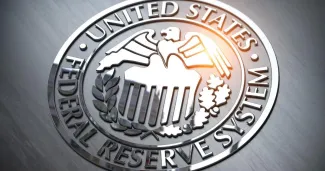
What the Fed’s Next Move Could Mean for Your Financial Plan
Key Takeaways
- The Federal Reserve adjusts interest rates to balance inflation and economic growth [1].
- A potential rate cut in the coming months could affect borrowing costs, savings yields, and investment markets [2][3].
- Lower rates may reduce returns on cash accounts and CDs but can provide relief for borrowers with mortgages, loans, or variable-rate debt [1].
- Market reactions to Fed decisions are often immediate and can influence both stock and bond prices [1][5].
- The best defense is a resilient financial plan that considers multiple rate environments, rather than reacting emotionally to headlines [4].
Why the Fed’s Decisions Matter
The Federal Reserve (the Fed) sets the target for the federal funds rate—the short-term interest rate that banks charge each other for overnight lending. This benchmark influences nearly every corner of the economy, from mortgage rates to credit card APRs to bond yields [1].
When inflation rises above the Fed’s 2% target, policymakers raise rates to cool the economy. When economic growth slows or unemployment rises, the Fed may cut rates to stimulate borrowing and spending [1].
Over the course of 2022-2023, the Fed raised rates aggressively to combat the highest inflation in four decades [5]. Now, with inflation easing [2] but growth showing signs of moderation [3], attention has turned to when and how much the Fed will begin cutting.
How a Rate Cut Ripples Through Your Financial Life
- Debt and Loans
A reduction in interest rates generally lowers borrowing costs. For homeowners, that could mean more favorable mortgage refinancing options. Business owners and individuals with lines of credit or variable-rate loans may also see payments decline [1]. - Savings and Cash
Savers have enjoyed high yields on cash accounts and CDs recently, some topping 5%. If the Fed begins lowering rates, those yields could gradually fall [1][5]. While cash is a critical piece of financial stability, it may be less rewarding as a long-term growth tool in a lower-rate environment. - Investments
Historically, lower rates tend to support equities because borrowing becomes cheaper for companies and future earnings are valued more favorably [1]. On the bond side, existing bonds with higher coupons may gain in value as new issuance comes at lower yields [1]. Still, markets are forward-looking and often react before changes are made [5].
Putting Fed Policy in Perspective
It’s tempting to view Fed meetings as singular, market-moving events—and they often are in the short term. But in the long term, what matters most is how your financial plan adapts to changing conditions.
Consider this: investors who remained invested across rate hike and cut cycles historically have fared better than those who tried to time the Fed. According to Morningstar research, attempting to jump in and out of markets in response to headlines often leads to missed opportunities and lower overall returns [4].
What You Can Do Now
At Totemic Wealth & Planning, we believe the right question isn’t “What will the Fed do next?” but rather “How can my financial plan stay resilient no matter what the Fed does?”
That means:
- Reviewing your debt structure to see if refinancing makes sense.
- Ensuring your investment portfolio is appropriately diversified across asset classes.
- Keeping enough cash for near-term needs but aligning excess savings toward long-term goals.
- Coordinating tax strategies with your CPA to capture potential opportunities tied to changing rates.
Fed policy will continue to shift over time. The key is having a strategy that lets you pursue your goals regardless of the direction of interest rates.
👉 If you’re curious how rate changes could affect your retirement plan, investment strategy, or day-to-day finances, schedule a conversation with our team today. We’ll help you plan with confidence, in any market environment.
Sources
- Board of Governors of the Federal Reserve System. Monetary Policy Basics: Federal Reserve and Interest Rates. federalreserve.gov
- Federal Reserve Bank of Cleveland. Inflation Nowcasting Model. clevelandfed.org
- Federal Reserve Bank of New York. Survey of Consumer Expectations. newyorkfed.org
- Morningstar. Mind the Gap: Investor Returns Show the Costs of Bad Timing Decisions. (Latest annual study) morningstar.com
- U.S. Bureau of Labor Statistics. Consumer Price Index. bls.gov

